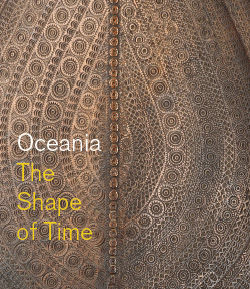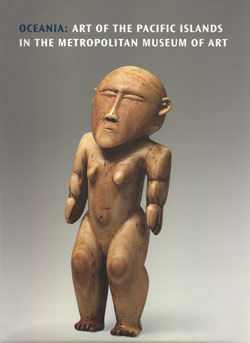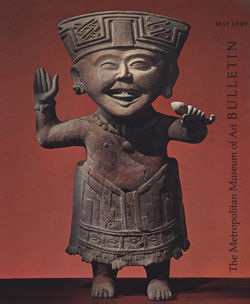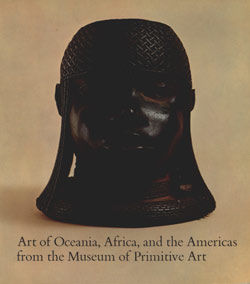Female Figure (Tetepeku)
Not on view
The sacred displays and sculptures of the complex male initiation cycle of the Abelam people are often suffused with female symbolism and imagery. The men’s ceremonial house (korombo) is itself seen as a female entity. The brightly painted panels that line the initiation chamber within are referred to as women’s string bags (wut) and the chamber itself is likened by some scholars to the womb. In the highest initiation rites, slender female images known as tetepeku, are erected inside the korombo above the main entrance and also above the entrance to the interior passages and initiation chamber. As the initiates enter the house or initiation chamber, they stoop or crawl beneath the legs of the tetepeku, passing under her so that they literally emerge from between her legs to enter the sacred space beyond, an act that symbolizes the rebirth of the novices as initiated men. To the uninitiated, those not entitled to enter the ceremonial house, the tetepeku is known as ‘she who blocks the road’, and the space between the figure’s legs is often closed off by her ‘string bag’, made from the barklike petioles of sago palms, which serves as a door. Beyond the tetepeku, the full splendor of the initiation chamber, with its brilliantly colored paintings, carvings, and massive effigies of the clan spirits (nggwalndu), is revealed to the initiated.
Although somewhat smaller in scale than other examples, this striking female figure is almost certainly a tetepeku. Carved fully in the round, the sculpture exhibits the bold, volumetric style characteristic of early Abelam sculpture in comparison to features associated with later examples which are considerably broader, flatter, and more schematically rendered. Like all Abelam wood images, when in use it would have been brightly painted with the rich red, yellow, black and white pigments favored by Abelam artists. Often preserved and reused for decades, Abelam figures were carefully washed in running streams to remove both the physical and magical traces of their earlier paint and then freshly painted each time they were installed in a new initiation display. Bearing evidence of many layers of paint, this venerable female figure likely witnessed the transformation of many generations of novices into initiated men.
Maia Nuku, 2020
Evelyn A. J. Hall and John A. Friede Associate Curator for Oceanic Art
Published Kjellgren, Eric. Oceania: Art of the Pacific Islands in the Metropolitan Museum of Art. New York: The Metropolitan Museum of Art and New Haven: Yale University Press, 2007, p. 64, no. 28
Due to rights restrictions, this image cannot be enlarged, viewed at full screen, or downloaded.





